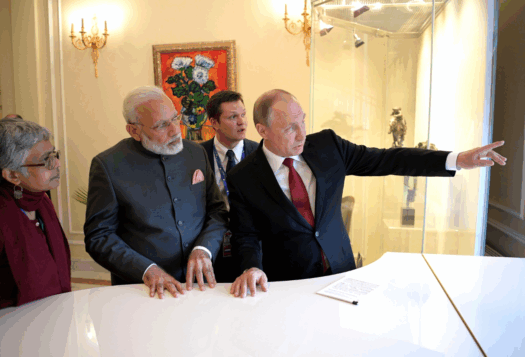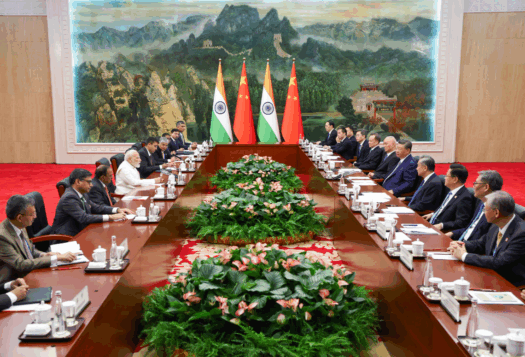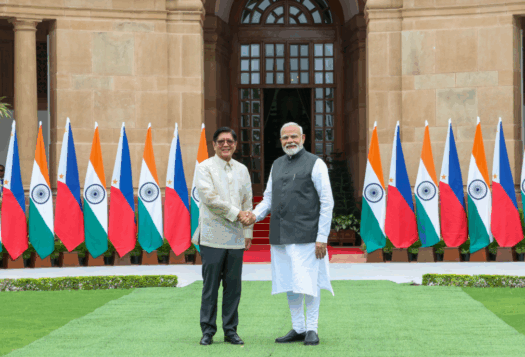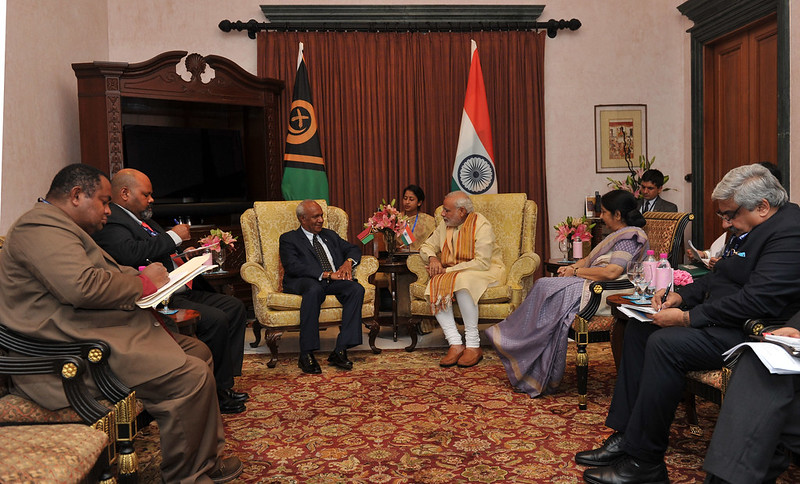
On April 20, Chinese foreign minister Wang Yi visited Papua New Guinea to strengthen the two countries’ comprehensive partnership. 24 hours after his departure, Australia’s Prime Minister Anthony Albanese followed suit, underscoring the increasing importance of the South Pacific among countries vying for economic and geopolitical influence in the Indo-Pacific.
The Pacific Island Countries (PICs), situated where the Indian and Pacific Oceans converge, consist of the Cook Islands, Fiji, Kiribati, Marshall Islands, Micronesia, Nauru, Samoa, Solomon Islands, Palau, Papua New Guinea, Tonga, Tuvalu, and Vanuatu. While renowned for their breathtaking landscapes, the PICs possess strategic and economic significance that transcends tourism. The PICs rely heavily on maritime trade and shipping for economic sustenance but also serve as a crucial hub for this trade and the maintenance of global economic stability.
China’s influence in the South Pacific is growing, driven by substantial diplomatic and economic initiatives, including large-scale infrastructure projects under its Belt and Road Initiative. Additionally, through aid and loan packages, China has formed diplomatic ties with numerous PICs, increasing its regional sway. Due to intensifying great power competition between China and the United States and its partners, India is prioritizing cultivating stronger bonds with PICs. Particularly amidst China’s escalating militarization in the South China Sea, India can leverage its cultural affinities and soft power within the region to deepen engagement and cooperation with these strategically significant island nations.
Due to intensifying great power competition between China and the United States and its partners, India is prioritizing cultivating stronger bonds with PICs.
Why does the South Pacific matter?
The South Pacific holds a special place in India’s strategic vision, characterized by its geographical significance, economic potential, and cultural connections. Firstly, the region’s vast natural resources, including fisheries, minerals, and energy reserves, present economic opportunities for India’s growing energy needs and trade diversification efforts.
Second, the PICs are strategically located near important sea routes for global trade and energy transportation in the South Pacific. Maintaining the region’s stability and security is crucial for ensuring uninterrupted global trade flows and safeguarding India’s maritime interests. Given that the major sea lines of communication passing through the PICs are largely influenced by bigger naval powers like China, it is crucial for India to maintain and grow its presence in the region as well.
Third, deepening India’s engagement with PICs is not just about bolstering maritime security or countering geopolitical rivalries; it is also about nurturing relationships with countries that share historical and cultural ties. In Papua New Guinea, cultural relations with India are thriving, and this is marked by the growing celebration of events such as Constitution Day and International Day of Yoga, alongside collaborations with UNITECH and contributions from the Indian diaspora. Similarly, India’s historical ties with Fiji, dating back to the migration of Indian laborers in 1879, underscore an enduring relationship complemented by initiatives like the Forum for India-Pacific Island Countries (FIPIC) and cultural exchanges facilitated by the Swami Vivekananda Cultural Center.
India’s Footprint in the South Pacific
India has been increasing its strategic focus on the region across multiple sectors, evidenced by initiatives like the Pacific Islands Forum (PIF). While India has been a dialogue partner of PIF since 2002, the more active engagement began in 2014 with the establishment of the Forum for India-Pacific Islands Cooperation (FIPIC), co-chaired by Prime Minister Narendra Modi and the leaders of all 14 PICs. The 2023 FIPIC Summit held in Papua New Guinea resulted in a 12-point development program that targeted key areas such as healthcare, cyberspace, clean energy, and support for small and medium enterprises (SMEs) in PICs. Notable initiatives announced included the establishment of a cardiology hospital in Fiji and the provision of desalination units to address water needs. In line with this, Quadrilateral Security Dialogue (Quad) nations have announced plans for the implementation of Open Radio Access Networks (RAN) beginning with Palau in the Pacific Region, among other deliverables. This marked a significant milestone, fostering sustained engagement in trade, aid, infrastructure, healthcare, information technology, and beyond.
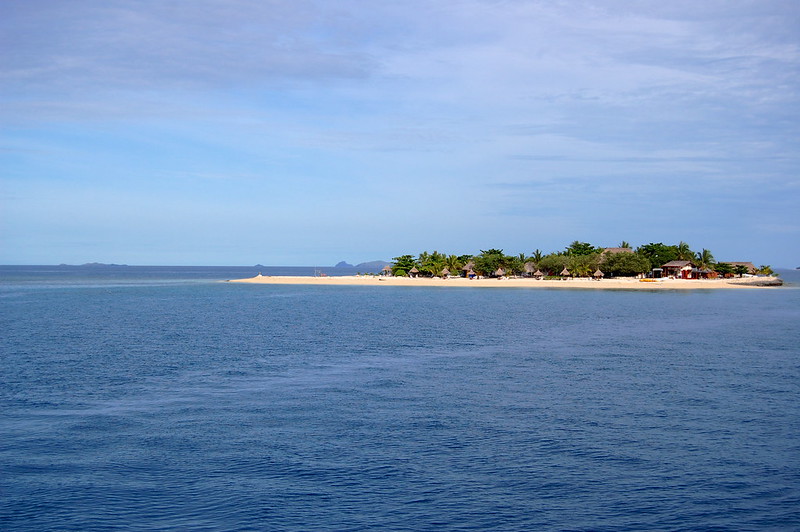
Economically, trade relations between India and the PICs have flourished, witnessing a total annual volume of USD $570 million as of 2021-22, with India exporting commodities such as plastics, pharmaceuticals, sugar, mineral fuel, and ores to the region. Diplomatically, India has achieved notable successes in the region as well. Most prominently, the second FIPIC summit was held in Jaipur, Rajasthan, in 2015, where 12 out of the 14 Pacific Island countries pledged their support for India’s Permanent Membership in the United Nations Security Council.
Moreover, India has been extending increased foreign aid to the islands in the South Pacific through soft loans for development, complemented by several Indian development projects focusing on healthcare, technology, and capacity building. Some examples of these include the establishment of a super-specialty cardiology hospital and dialysis units in Fiji, sea ambulances for all 14 PICs, and an IT and Cyber Security Training hub in Papua New Guinea. Additionally, India’s involvement in solar projects and SME development initiatives underscores its commitment to sustainable energy solutions and economic empowerment in the PICs.
India’s multifaceted engagement aligns well with its role as an advocate for the Global South during its G20 presidency in 2023. Looking forward, these initiatives can be further bolstered through collaboration with the Quad, particularly in enhancing maritime security cooperation with PICs on issues like illegal fishing and piracy.
Looking Ahead
Navigating strategic interests in the South Pacific requires a comprehensive approach that consolidates existing initiatives and charts a clear path forward that is beneficial to both the PICs and India. India can enhance naval cooperation with the PICs by focusing on strategic deployment and sustainable infrastructure development. Joint exercises and standardized procedures can significantly boost interoperability. India can improve personnel exchanges and maritime security collaborations by taking inspiration from its 2017 Memorandum of Understanding with Fiji to create similar agreements with other PICs. This collaborative approach would strengthen regional crisis preparedness, especially for natural disasters and economic challenges that are common in this region. Additionally, prioritizing trade facilitation, economic diversification, market access, investment, SME support, and digital technology through the FIPIC trade office in New Delhi aligns with the PICs’ focus on economic self-reliance and sustainable development.
The combination of the South Pacific region’s strategic location, economic potential, and cultural ties make it a vital region to extend India’s Indo-Pacific vision.
Expanding its diplomatic presence in the South Pacific offers India key advantages, including countering China’s influence and strengthening ties with island nations. However, India must carefully weigh the costs and logistical challenges. India can efficiently strengthen its diplomatic ties in Oceania by utilizing its existing missions in Australia, New Zealand, Papua New Guinea, and Fiji, which collectively cover the region. Additionally, trilateral partnerships with Australia and Indonesia can enhance economic, infrastructural, and security cooperation. Simultaneously integrating the Quad into this strategy would further amplify these efforts in the South Pacific.
Conclusion
The combination of the South Pacific region’s strategic location, economic potential, and cultural ties make it a vital region to extend India’s Indo-Pacific vision. India’s engagement not only addresses great power rivalry with China but also emphasizes cultivating partnerships based on shared values and mutual respect. Looking forward, increasing naval deployments, establishing and fostering trilateral partnerships, and prioritizing trade and sustainable development will help strengthen India’s cooperation with the region and, ultimately, contribute to a stable and prosperous Indo-Pacific.
Also Read: Middle Power Minilateralism: An Effective Indo-Pacific Strategy for India?
***
Image 1: PM Modi with PM of Vanuatu at the 2nd FIPIC summit via Flickr
Image 2: Beachcomber in Fiji via MickiTakesPictures on Flickr
